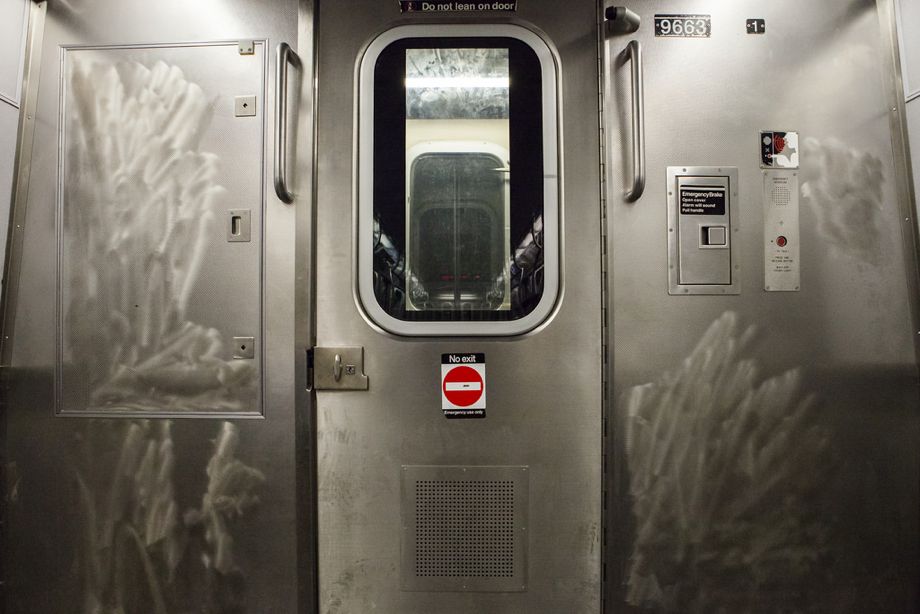NYC’s Decades-Long War on Subway Graffiti

Courtesy of William Ward via Flickr
Roman Mars’ podcast 99% Invisible covers design questions large and small, from his fascination with rebar to the history of slot machines to the great Los Angeles Red Car conspiracy. Here at the Eye, we cross-post new episodes and host excerpts from the 99% Invisible blog, which offers complementary visuals for each episode.
This week's edition—about NYC subway graffiti—can be played below. Or keep reading to learn more.
In just about every movie set in New York City in the 1970s and ’80s, there’s an establishing shot with a graffiti-covered subway train.
That graffiti was like illegible technicolor hieroglyphics—a language that even most New Yorkers couldn’t read. It gave you a sense that the subways were controlled by wild gangs of teenagers. And they kind of were.
For city officials, train graffiti was a sign that they had lost control. So, starting in the early ’70s, mayors of New York vowed to eradicate graffiti. First, Mayor John Lindsay formed the first anti-graffiti task force. He also re-classified graffiti from a nuisance, like littering or loitering, to a crime.
Still, subway graffiti persisted. For two decades, the MTA failed miserably—sometimes laughably—in its attempts to fix the problem. Like the time it decided to repaint 7,000 subway cars white. It was called “The Great White Fleet.” Of course, this only provided a fresh white canvas for the graffiti writers and before you knew it, the fleet was covered in spray paint again.
Then there was Mayor Ed Koch’s “Berlin Wall” method. Koch surrounded the train yards with two fences topped with barbed wire and guarded by German shepherds. This worked until graffiti writers realized they could distract the dogs with food and cut through the fences.
In 1984 David Gunn became president of the New York City Transit Authority.
David Gunn had already cleaned up subways in Boston, Philadelphia, D.C., Toronto, and also headed up Amtrak for a while, too. Yet even Gunn was intimidated by the state of New York’s subways; he called the job a “suicide mission.”
For decades, authorities treated subway graffiti like it was a sanitation issue. Gunn believed that graffiti was a symptom of larger systemic problems. After all, trains were derailing nearly every two weeks. In 1981 there were 1,800 subway car fires—that’s nearly five a day, every day of the year!
When Gunn launched his “Clean Trains” program, it was not only about cleaning up the trains aesthetically but making them function well, too. Clean trains, Gunn believed, would be a symbol of a rehabilitated transit system.
Systemically, train line by train line, Gunn took the subways off the map for graffiti writers. If graffiti artists “bombed” a train car, the MTA pulled it from the system. Even during rush hour.
May 12, 1989, was declared the official day of the city’s victory over train graffiti.
But of course train graffiti has never stopped.
There is still subway graffiti—it just never leaves the train yards. Artists—many of them from abroad—paint subway cars knowing full well that they will get cleaned before they’re ever seen by the public.
The only place most people can see NYC subway graffiti is on social media (see: #CLEANTRAIN on Instagram).
Given that graffiti artists won’t have their work seen as widely as they once did by painting the trains—and that they face a substantial risk of jail time and severe fines—subway graffiti in New York may be dying out.
And if it did, how would we even know?
To learn more, check out the 99% Invisible post or listen to the show.
